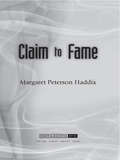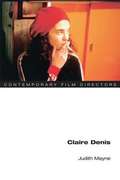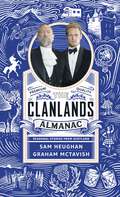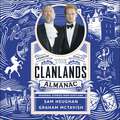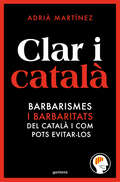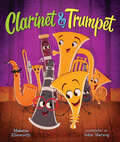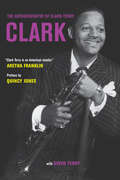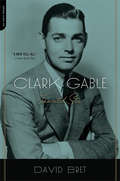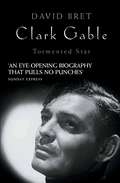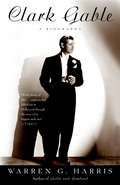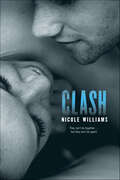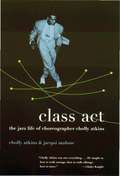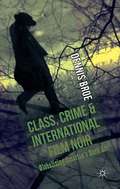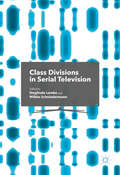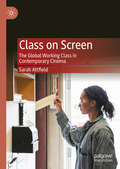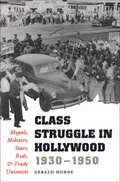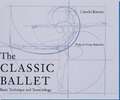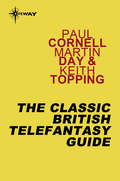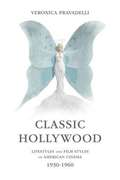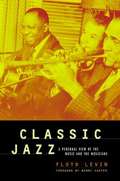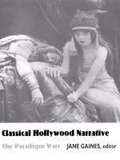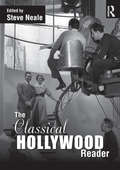- Table View
- List View
Claim to Fame
by Margaret Peterson HaddixI have to tell you my secret. I can't go on...without revealing it. I had a pretty good run, hiding from everyone for five years. For five years I was safe. But now... It was a talent that came out of nowhere. One day Lindsay Scott was on the top of the world, the star of a hit TV show. The next day her fame had turned into torture. Every time anyone said anything about her, she heard it. And everyone was talking about Lindsay: fans, friends, enemies, enemies who pretended to be friends.... Lindsay had what looked like a nervous breakdown and vanished from the public eye. But now she's sixteen and back in the news: A tabloid newspaper claims that Lindsay is being held hostage by her father. The truth? Lindsay has been hiding out in a small Illinois town, living in a house that somehow provides relief from the stream of voices in her head. But when two local teenagers try to "rescue" Lindsay by kidnapping her, Lindsay is forced to confront everything she's hiding from. And that's when she discovers there may be others who share her strange power. Lindsay is desperate to learn more, but what is she willing to risk to find the truth? Acclaimed author Margaret Peterson Haddix crafts a remarkable novel that will give readers a lot to talk about.
Claire Denis (Contemporary Film Directors)
by Judith MayneWidely regarded as one of the most innovative and passionate filmmakers working in France today, Claire Denis has continued to make beautiful and challenging films since the 1988 release of her first feature, Chocolat. Judith Mayne's comprehensive study of these films traces Denis's career and discusses her major feature films in rich detail. Born in Paris but having grown up in Africa, Denis explores in her films the legacies of French colonialism and the complex relationships between sexuality, gender, and race. From the adult woman who observes her past as a child in Cameroon to the Lithuanian immigrant who arrives in Paris and watches a serial killer to the disgraced French Foreign Legionnaire attempting to make sense of his past, the subjects of Denis's films continually revisit themes of watching, bearing witness, and making contact, as well as displacement, masculinity, and the migratory subject.
The Clanlands Almanac: Seasonal Stories from Scotland
by Sam Heughan Graham McTavishA seasonal meander through the wilds of Scotland.'If Clanlands was a gentle road trip through Scotland, this almanac is a top down, pedal to the metal up and down odyssey through the many byways of a Scottish year. An invitation to anyone who picks up the book to join us on a crazy camper van exploration over 12 glorious, whisky fuelled months. Mountains, battles, famous (and infamous) Scots, the alarming competitiveness of Men in Kilts, clans, feuds, flora, fauna, with a healthy sprinkling of embarrassing personal reminiscences thrown in. Much is explored, all is shared. It is a camper van cornucopia of all things Alba'.From First Footing to Samhain, Fringe Festival follies to whisky lore, Sam & Graham guide readers through a year of Scottish legends, traditions, historical and contemporary events, sharing personal stories and tips as only these two chalk-and-cheese friends can.As entertaining as it is practical, The Clanlands Almanac is a light-hearted education in Scottish history and culture, told through the eyes of two passionate Scotsmen. The perfect escapist guide, The Clanlands Almanac is intended as a starting point for your own Scottish discoveries.
The Clanlands Almanac: Seasonal Stories from Scotland
by Sam Heughan Graham McTavishA seasonal meander through the wilds of Scotland.'If Clanlands was a gentle road trip through Scotland, this almanac is a top down, pedal to the metal up and down odyssey through the many byways of a Scottish year. An invitation to anyone who picks up the book to join us on a crazy camper van exploration over 12 glorious, whisky fuelled months. Mountains, battles, famous (and infamous) Scots, the alarming competitiveness of Men in Kilts, clans, feuds, flora, fauna, with a healthy sprinkling of embarrassing personal reminiscences thrown in. Much is explored, all is shared. It is a camper van cornucopia of all things Alba'.From First Footing to Samhain, Fringe Festival follies to whisky lore, Sam & Graham guide readers through a year of Scottish legends, traditions, historical and contemporary events, sharing personal stories and tips as only these two chalk-and-cheese friends can.As entertaining as it is practical, The Clanlands Almanac is a light-hearted education in Scottish history and culture, told through the eyes of two passionate Scotsmen. The perfect escapist guide, The Clanlands Almanac is intended as a starting point for your own Scottish discoveries.
The Clanlands Almanac: Seasonal Stories from Scotland
by Sam Heughan Graham McTavishThe follow up to the quarter of a million-copy selling, Sunday Times and New York Times #1 bestselling, Clanlands. Sam & Graham turn tour guides once again to bring listeners more epic tales from Scotland.A seasonal meander through the wilds of Scotland.'If Clanlands was a gentle road trip through Scotland, this Almanac is a top down, pedal to the metal up and down odyssey through the many byways of a Scottish year. An invitation to anyone who picks up the book to join us on a crazy camper van exploration over 12 glorious, whisky fuelled months. Mountains, battles, famous (and infamous) Scots, the alarming competitiveness of Men in Kilts, clans, feuds, flora, fauna, with a healthy sprinkling of embarrassing personal reminiscences thrown in. Much is explored, all is shared. It is a camper van cornucopia of all things Alba'.From First Footing to Samhain, Fringe Festival follies to whisky lore, Sam & Graham guide listeners through a year of Scottish legends, traditions, historical and contemporary events, sharing personal stories and tips as only these two chalk-and-cheese friends can.As entertaining as it is practical, The Clanlands Almanac is a light-hearted education in Scottish history and culture, told through the eyes of two passionate Scotsmen. The perfect escapist guide, The Clanlands Almanac is intended as a starting point for your own Scottish discoveries.(P)2021 Hodder & Stoughton Limited
Clar i català: Els barbarismes (i barbaritats) més freqüents i com pots evitar-los
by Jo Aprenc Català @joaprenccatalaAra és l’hora de parlar clar i català! Descobreix els barbarismes més comuns i com evitar-los en un llibre imprescindible. 100 BARBARISMES PER APRENDRE A PARLAR MILLOR LA LLENGUA (CATALANA) Parles sovint en català, però de tant en (quant) tant deixes anar un barbarisme? Et (dona apuro) fa vergonya cometre errors però no saps com evitar-los? (Menos mal) Encara sort que tens aquest llibre!Deixa't de (tonteries) ximpleries i comença a (exprimir) esprémer la llengua com mai. Descobreix 100 barbarismes de la llengua catalana, aprèn les seves formes en català i enriqueix el teu vocabulari amb les expressions més genuïnes i divertides de la nostra llengua. HA ARRIBAT L'HORA DE DONAR UNA (PATADA) PUNTADA DE PEU ALS BARBARISMES I PARLAR LA LLENGUA COM CAL!
Clarinet and Trumpet
by Melanie EllsworthA charming and funny picture book featuring the harmonious friendship between Clarinet and Trumpet. But what happens when their friendship falls flat? Perfect for fans of Stick & Stone and Spoon.
Clark: The Autobiography of Clark Terry
by Gwen Terry Clark Terry Quincy Jones Bill CosbyCompelling from cover to cover, this is the story of one of the most recorded and beloved jazz trumpeters of all time. With unsparing honesty and a superb eye for detail, Clark Terry, born in 1920, takes us from his impoverished childhood in St. Louis, Missouri, where jazz could be heard everywhere, to the smoke-filled small clubs and carnivals across the Jim Crow South where he got his start, and on to worldwide acclaim. Terry takes us behind the scenes of jazz history as he introduces scores of legendary greats--Ella Fitzgerald, Oscar Peterson, Dizzy Gillespie, Dinah Washington, Doc Severinsen, Ray Charles, Thelonious Monk, Billie Holiday, Sarah Vaughan, Coleman Hawkins, Zoot Sims, and Dianne Reeves, among many others. Terry also reveals much about his own personal life, his experiences with racism, how he helped break the color barrier in 1960 when he joined the Tonight Show band on NBC, and why--at ninety years old--his students from around the world still call and visit him for lessons.
Clark Gable: Tormented Star
by David BretFrom the acclaimed author of Joan Crawford comes a riveting and uncensored biography of Clark Gable. The archetypal male of his era, Gable was named "King of Hollywood" in 1938. But as David Bret reveals, the star was not quite who he seemed.<P><P> One of Gable's best-kept secrets was his bisexuality. Bret recounts Gable's failed marriages to women who turned a blind eye toward his affairs with actors Earl Larimore and Rod La Rocque, among other men. Bret also reveals how a pseudo-scandalous paternity suit and the actor's wartime accomplishments were no more than elaborate publicity stunts created by studio chief Louis B. Mayer in order to exaggerate Gable's masculinity and heroism in the public eye. With passion and accuracy, Bret uncovers the truth behind one of Hollywood's biggest stars.
Clark Gable: Tormented Star
by David BretClark Gable was perceived as the archetypal Hollywood superman, the kind of man that women lusted after and their husbands envied. However, as David Bret reveals in this powerful biography, in the early days of his career, with his squinty teeth and fondness for men as well as woman, he was anything but the wholesome figure he appeared. Gable was adopted by the &‘Sewing Circle&’ – the group that included Jean Harlow and, ironically, Carole Lombard, the great love of his life. Bret also reveals how Gable&’s wartime &‘heroics&’, which saw him promoted through the ranks from Private to Major in less than a year, were no more than an elaborate publicity stunt. Like an earlier paternity suit, it was an exercise dreamed up by studio chief, Louis B. Mayer to promote and protect Gable&’s image. After ending an affair with Ben Maddox in 1942, Gable seems to have &‘gone straight&’, from which point Bret moves into more familiar territory, focusing on Gable&’s great movies including Gone With the Wind and on his affairs with Joan Crawford, Ava Gardner and other famous stars. Drawing on a wealth of unpublished material, Bret pulls no punches in this star-studded story of Gable&’s life, told with candour and panache. David Bret is one of Britain&’s leading showbusiness biographers, and an authority on the chanson. His many highly successful books incllde: Edth Piaf, Joan Crawford, Jean Harlow, Errol Flynn and the soon to be published Mario Lanza (all from JR Books)
Clark Gable: A Biography
by Warren G. HarrisClark Gable arrived in Hollywood after a rough-and-tumble youth, and his breezy, big-boned, everyman persona quickly made him the town's king. He was a gambler among gamblers, a heavy drinker in the days when everyone drank seemingly all the time, and a lover to legions of the most attractive women in the most glamorous business in the world, including the great love of his life, Carole Lombard.In this well-researched and revealing biography, Warren G. Harris gives an exceptionally acute portrait of one of the most memorable actors in the history of motion pictures--whose intimates included such legends as Marilyn Monroe, Joan Crawford, Loretta Young, David O. Selznick, Jean Harlow, Judy Garland, Lana Turner, Spencer Tracy, and Grace Kelly--as well as a vivid sense of the glamour and excess of mid-century Hollywood.From the Trade Paperback edition.
Clash: Includes Crash, Clash And Crush (Crash #2)
by Nicole WilliamsThe second book in the New York Times bestselling Crash trilogy!Their Romeo-and-Juliet-level passion is the only thing Jude and Lucy agree on. That, and fighting all the time . . .Also not helping? Lucy's raging jealousy of the cheerleader who's wormed her way into Jude's life.While trying to hang on to her quintessential bad boy and also training to be the top ballet dancer in her class, Lucy knows something's going to give . . . soon.How can she live without the boy she loves? How can she live with herself if she gives up on her dreams? If Lucy doesn't make the right choice, she could lose everything.
Class Act: The Jazz Life of Choreographer Cholly Atkins
by Cholly Atkins Jacqui MaloneCholly Atkins's career has spanned an extraordinary era of American dance. He began performing during Prohibition and continued his apprenticeship in vaudeville, in nightclubs, and in the army during World War II. With his partner, Honi Coles, Cholly toured the country, performing with such jazz masters as Louis Armstrong, Cab Calloway, and Count Basie. As tap reached a nadir in the fifties, Cholly created the new specialization of "vocal choreography," teaching rhythm-and-blues singers how to perform their music by adding rhythmical dance steps drawn from twentieth-century American dance, from the Charleston to rhythm tap. For the burgeoning Motown record label, Cholly taught such artists as the Supremes, Smokey Robinson and the Miracles, the Temptations, Gladys Knight and the Pips, and Marvin Gaye to command the stage in ways that would enhance their performances and "sell" their songs.Class Act tells of Cholly's boyhood and coming of age, his entry into the dance world of New York City, his performing triumphs and personal tragedies, and the career transformations that won him gold records and a Tony for choreographing Black and Blue on Broadway. Chronicling the rise, near demise, and rediscovery of tap dancing, the book is both an engaging biography and a rich cultural history.
Class, Crime and International Film Noir
by Dennis BroeClass, Crime and International Film Noir argues that, in its postwar, classical phase, this dark variant of the crime film was not just an American phenomenon. Rather, these seedy tales with their doomed heroes and heroines were popular all over the world including France, Britain, Italy and Japan.
Class Divisions in Serial Television
by Sieglinde Lemke Wibke SchniedermannThis book brings the emergent interest in social class and inequality to the field of television studies. It reveals how the new visibility of class matters in serial television functions aesthetically and examines the cultural class politics articulated in these programmes. This ground-breaking volume argues that reality and quality TV's intricate politics of class entices viewers not only to grapple with previously invisible socio-economic realities but also to reconsider their class alignment. The stereotypical ways of framing class are now supplemented by those dedicated to exposing the economic and socio-psychological burdens of the (lower) middle class. The case studies in this book demonstrate how sophisticated narrative techniques coincide with equally complex ways of exposing class divisions in contemporary American life and how the examined shows disrupt the hegemonic order of class. The volume therefore also invites a rethinking of conventional models of social stratification.
Class on Screen: The Global Working Class in Contemporary Cinema
by Sarah AttfieldThis book provides an analysis of the global working class on film and considers the ways in which working-class experience is represented in film around the world. The book argues that representation is important because it shapes the way people understand working-class experience and can either reinforce or challenge stereotypical depictions. Film can shape and shift discussions of class, and this book provides an interdisciplinary study of the ways in which working-class experience is portrayed through this medium. It analyses the impact of contemporary films such as Sorry To Bother You, This is England and Le Harve that focus on working class life. Attfield demonstrates that the global working class are characterised by diversity of race, ethnicity, gender, religion and sexuality but that there are commonalities of experience despite geographical distance and cultural difference. The book is structured around themes such as work, culture, diasporas, gender and sexuality, and race.
Class Struggle in Hollywood, 1930-1950: Moguls, Mobsters, Stars, Reds, & Trade Unionists
by Gerald HorneAs World War II wound down in 1945 and the cold war heated up, the skilled trades that made up the Conference of Studio Unions (CSU) began a tumultuous strike at the major Hollywood studios. This turmoil escalated further when the studios retaliated by locking out CSU in 1946. This labor unrest unleashed a fury of Red-baiting that allowed studio moguls to crush the union and seize control of the production process, with far-reaching consequences. This engrossing book probes the motives and actions of all the players to reveal the full story of the CSU strike and the resulting lockout of 1946. Gerald Horne draws extensively on primary materials and oral histories to document how limited a "threat" the Communist party actually posed in Hollywood, even as studio moguls successfully used the Red scare to undermine union clout, prevent film stars from supporting labor, and prove the moguls' own patriotism.
Class Struggle in Hollywood, 1930–1950: Moguls, Mobsters, Stars, Reds, & Trade Unionists
by Gerald Horne&“A taut narrative in elegant prose . . . Horne has unearthed a vitally important and mostly forgotten aspect of Hollywood and labor history.&” —Publishers Weekly As World War II wound down in 1945 and the cold war heated up, the skilled trades that made up the Conference of Studio Unions (CSU) began a tumultuous strike at the major Hollywood studios. This turmoil escalated further when the studios retaliated by locking out CSU in 1946. This labor unrest unleashed a fury of Red-baiting that allowed studio moguls to crush the union and seize control of the production process, with far-reaching consequences. This engrossing book probes the motives and actions of all the players to reveal the full story of the CSU strike and the resulting lockout of 1946. Gerald Horne draws extensively on primary materials and oral histories to document how limited a &“threat&” the Communist party actually posed in Hollywood, even as studio moguls successfully used the Red scare to undermine union clout, prevent film stars from supporting labor, and prove the moguls&’ own patriotism. Horne also discloses that, unnoticed amid the turmoil, organized crime entrenched itself in management and labor, gaining considerable control over both the &“product&” and the profits of Hollywood. This research demonstrates that the CSU strike and lockout were a pivotal moment in Hollywood history, with consequences for everything from production values, to the kinds of stories told in films, to permanent shifts in the centers of power.
The Classic Ballet: Basic Technique And Terminology
by Lincoln Kirstein Muriel Stuart Carlus DyerA warm welcome back to this beloved classic! For decades the standard text for ballet technique, this book--first published in 1952--presents a beginner's guide to basic movements, steps, and terminology. Written by the staff of the School of American Ballet, it builds on the Russian tradition of Anna Pavlova and reflects the dance style of George Balanchine.
The Classic British Telefantasy Guide
by Paul Cornell Martin Day Keith ToppingThe Classic British Telefantasy Guide is derived from the second edition of The Guinness Book of Classic British TV with various corrections and a revised introduction to bring it up to date. It was written when the Internet barely existed, and at a time when few books had been published on the subject. This is, however, by no means a new or completely revised version of the original material - too much time has passed, and if we were to start reworking and correcting the text now, it would probably never be finished! Instead, Classic British Telefantasy is an electronic reprint of some of the authors' earliest work, repacked for a new format and, perhaps, a new age.
Classic Hollywood: Lifestyles and Film Styles of American Cinema, 1930-1960
by Michael Meadows Veronica PravadelliStudies of "Classic Hollywood" typically treat Hollywood films released from 1930 to 1960 as a single interpretive mass. Veronica Pravadelli complicates this idea. Focusing on dominant tendencies in box office hits and Oscar-recognized classics, she breaks down the so-called classic period into six distinct phases that follow Hollywood's amazingly diverse offerings from the emancipated females of the "Transition Era" and the traditional men and women of the conservative 1930s that replaced it to the fantastical Fifties movie musicals that arose after anti-classic genres like film noir and women's films. Pravadelli sets her analysis apart by paying particular attention to the gendered desires and identities exemplified in the films. Availing herself of the significant advances in film theory and modernity studies that have taken place since similar surveys first saw publication, she views Hollywood through strategies as varied as close textural analysis, feminism, psychoanalysis, film style and study of cinematic imagery, revealing the inconsistencies and antithetical traits lurking beneath Classic Hollywood's supposed transparency.
Classic Jazz: A Personal View of the Music and the Musicians
by Floyd LevinAn award-winning jazz writer has pulled together 50 years' worth of his articles, which appeared mostly in jazz magazines, to take readers into the world of jazz and its musicians. This personal view of a rich American music weaves in anecdotal material, primary research, and music analysis into every chapter. 51 photos. 10 line illustrations.
The Classical Hollywood Cinema: Film Style and Mode of Production to 1960
by David Bordwell Janet Staiger Kristin ThompsonHow films are conceived,planned, and produced leaves a mark upon the films, directly and structurally. The relations between film style and mode of production are, according to the authors, reciprocal and mutually influencing. The authors trace such topics as style, economics, and technology over time, demonstrating how significant changes occurred in Hollywood from the earliest days through the sixties.
Classical Hollywood Narrative: The Paradigm Wars
by Jane M. GainesSince the 1970s film studies has been dominated by a basic paradigm--the concept of classical Hollywood cinema--that is, the protagonist-driven narrative, valued for the way it achieves closure by neatly answering all of the enigmas it raises. It has been held to be a form so powerful that its aesthetic devices reinforce gender positions in society. In a variety of ways, the essays collected here--representing the work of some of the most innovative theorists writing today--challenge this paradigm.Significantly expanded from a special issue of South Atlantic Quarterly (Spring 1989), these essays confront the extent to which formalism has continued to dominate film theory, reexamine the role of melodrama in cinematic development, revise notions of "patriarchal cinema," and assert the importance of television and video to cinema studies. A range of topics are discussed, from the films of D. W. Griffith to sexuality in avant-garde film to television's Dynasty.Contributors. Rick Altman, Richard Dienst, Jane Feuer, Jane Gaines, Christine Gledhill, Miriam Hansen, Norman N. Holland, Fredric Jameson, Bill Nichols, Janey Staiger, Chris Straayer, John O. Thompson
The Classical Hollywood Reader
by Steve NealeThe Classical Hollywood Reader brings together essential readings to provide a history of Hollywood from the 1910s to the mid 1960s. Following on from a Prologue that discusses the aesthetic characteristics of Classical Hollywood films, Part 1 covers the period between the 1910s and the mid-to-late 1920s. It deals with the advent of feature-length films in the US and the growing national and international dominance of the companies responsible for their production, distribution and exhibition. In doing so, it also deals with film making practices, aspects of style, the changing roles played by women in an increasingly business-oriented environment, and the different audiences in the US for which Hollywood sought to cater. Part 2 covers the period between the coming of sound in the mid 1920s and the beginnings of the demise of the `studio system` in late 1940s. In doing so it deals with the impact of sound on films and film production in the US and Europe, the subsequent impact of the Depression and World War II on the industry and its audiences, the growth of unions, and the roles played by production managers and film stars at the height of the studio era. Part 3 deals with aspects of style, censorship, technology, and film production. It includes articles on the Production Code, music and sound, cinematography, and the often neglected topic of animation. Part 4 covers the period between 1946 and 1966. It deals with the demise of the studio system and the advent of independent production. In an era of demographic and social change, it looks at the growth of drive-in theatres, the impact of television, the advent of new technologies, the increasing importance of international markets, the Hollywood blacklist, the rise in art house imports and in overseas production, and the eventual demise of the Production Code. Designed especially for courses on Hollywood Cinema, the Reader includes a number of newly researched and written chapters and a series of introductions to each of its parts. It concludes with an epilogue, a list of resources for further research, and an extensive bibliography.
